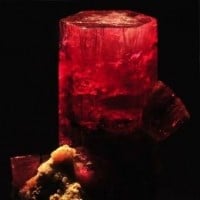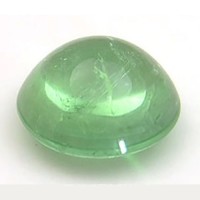Top 10 Gemstone Varieties of the Mineral Beryl
The most well-known varieties of beryl include emerald and aquamarine. Beryl varieties are distinguished by their color.Pure beryl is colorless but beryl occurs in almost all main colors, such as green, blue, yellow, white, pink, purple, and red (the rarest).
When the first eyeglasses were constructed in the 13th century in Italy, the lenses were made of beryl because glass could not be made clear enough. But beryl could. Consequently, glasses were named Brillen in German, bril in Dutch and Briller in Danish.
Beryl is a mineral composed of beryllium aluminium cyclosilicate. Its crystals are hexagonal. Gemstones from the beryl family are pretty tough and resistant to scratch with a Hardness Index of 7.5-8.0 on Mohs scale (10 is the maximum on this scale - diamond has 10).
The world's largest naturally occurring crystal of any mineral is a crystal of beryl from Malakialina, Madagascar. Size: 18 m (59 ft) long and 3.5 m (11 ft) in diameter, and weighing 380,000 kg (840,000 lb).
Here are the most prominent members of Beryl's gemstone family.

Red Beryl is very rare because red is the rarest color of beryl. Moreover, that's an incredible shade of red.
Its dark red color is attributed to trace amounts of manganese (Mn 3+ ions).
Bixbite is Red Beryl's old name that was deprecated because of the risk of confusion with the mineral bixbyite.
Sometimes Red Beryl has been marketed as "red emerald" or "scarlet emerald".
Emerald is actually the deep green variety of beryl (the light green form of beryl is recognized as Green Beryl and not as Emerald).
Emerald is very popular but most emeralds are highly included that causes poor resistance to breakage, lowering their value.
Aquamarine is actually a blue (or cyan) variety of beryl.
Morganite is a rare light pink to rose-colored gem-quality variety of beryl, also known as "pink beryl", "rose beryl", "pink emerald", and "cesian (or caesian) beryl"
(aka Blue Beryl)
It's a deep blue version of aquamarine. Maxixe is commonly found in Madagascar and Brazil.
It's beryl with greenish-yellow shades

It's the light green form of beryl (pale green shade) while emerald is the deep green variety
Its colors can range from pale yellow to a brilliant gold
Goshenite is the colorless-to-white variety of Beryl.
Green-yellow beryl, occurring in Brazil